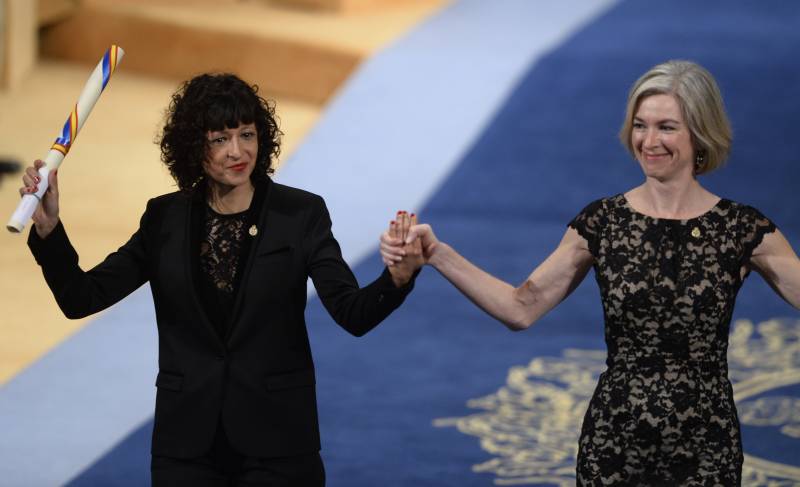Dr. Francis Collins, who led the drive to map the human genome, said the technology “has changed everything” about how to approach diseases with a genetic cause, such as sickle cell disease.
“You can draw a direct line from the success of the human genome project to the power of CRISPR-cas to make changes in the instruction book,” said Collins, director of the National Institutes of Health, which helped fund Doudna’s work.
But many also cautioned that the technology raises serious ethical questions and must be used carefully. Much of the world became more aware of CRISPR in 2018, when Chinese scientist He Jiankui revealed he had helped make the world’s first gene-edited babies, to try to engineer resistance to future infection with the AIDS virus. His work was denounced as unsafe human experimentation because of the risk of causing unintended changes that could pass to future generations, and he’s been sentenced to prison in China.
In September, an international panel of experts issued a report saying it’s still too soon to try to make genetically edited babies because the science isn’t advanced enough to ensure safety, but they mapped a pathway for countries that want to consider it.
“Being able to selectively edit genes means that you are playing God in a way,” said American Chemical Society President Luis Echegoyen, a chemistry professor at the University of Texas El Paso.
Charpentier, 51, spoke of the shock of winning.
“Strangely enough I was told a number of times (that I’d win), but when it happens you’re very surprised and you feel that it’s not real,” she told reporters by phone from Berlin after the award was announced in Stockholm by the Royal Swedish Academy of Sciences. “But obviously it’s real, so I have to get used to it now.”
When asked about the significance of two women winning, Charpentier said that while she considers herself first and foremost a scientist, “it’s reflective of the fact that science becomes more modern and involves more female leaders.”
“I do hope that it will remain and even develop more in this direction,” she said, adding that it’s “more cumbersome to be a woman in science than to be a man in science.”
Three times a woman has won a Nobel in the sciences by herself; this is the first time an all-female team won a science prize. In 1911, Marie Curie was the sole recipient of the chemistry award, as was Dorothy Crowfoot Hodgkin in 1964. In 1983, Barbara McClintock won the Nobel for medicine.
Doudna told The Associated Press of her own surprise — including that she learned she’d won from a reporter.
“I literally just found out, I’m in shock,” she said. “I was sound asleep.
“My greatest hope is that it’s used for good, to uncover new mysteries in biology and to benefit humankind,” said Doudna, who is affiliated with UC Berkeley and is paid by the Howard Hughes Medical Institute, which also supports AP’s Health and Science Department.
The breakthrough research done by Charpentier and Doudna was published in 2012, making the discovery very recent compared to much Nobel-wining research, which is often only honored after decades have passed.
Speaking to reporters from the Max Planck Unit for the Science of Pathogens in Berlin, which she leads, Charpentier said despite how recently it was developed, the method is now widely used by scientists researching diseases, developing drugs and engineering new plants.
Among the most promising therapies already being developed are for eye diseases and blood disorders, such as sickle cell disease and beta thalassemia, she said. It could also have applications in the growing field of cancer immunotherapy.
Developing hardy crops is another promising direction, said Charpentier. “I think this is very important considering the challenge we are facing of climate change,” she said.
The Broad Institute at Harvard and MIT have been in a long court fight over patents on CRISPR technology, and many other scientists did important work on it, but Doudna and Charpentier have been most consistently honored with prizes for turning it into an easily usable tool.
The prestigious award comes with a gold medal and prize money of 10 million kronor (more than $1.1 million), courtesy of a bequest left more than a century ago by the prize’s creator, Swedish inventor Alfred Nobel. The amount was increased recently to adjust for inflation.
On Monday, the Nobel Committee awarded the prize for physiology and medicine for discovering the liver-ravaging hepatitis C virus. Tuesday’s prize for physics honored breakthroughs in understanding the mysteries of cosmic black holes.
The other prizes are for outstanding work in the fields of literature, peace and economics.

